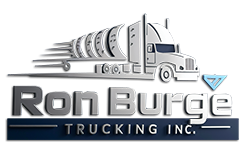Frequently Asked Questions
Bulk goods and hazardous materials can be very different from one another. Bulk goods, such as foods or natural resources, are sold in large quantities and they generally pose no risk to humans. Hazardous materials, on the other hand, are much more concerning. These items may contain combustible liquid or highly corrosive substances that could potentially injure people if mishandled or used improperly. In order to keep everyone safe, it is important to handle hazardous materials with caution, whereas bulk goods need only minimal handling and can be kept relatively secure. Understanding the difference between bulk goods and hazardous materials is a key step in keeping everyone safe.
Bulk goods are an essential part of the supply chain and delivery process, used in retail stores, food service providers, manufacturing and more.
While many people think of large pallets or containers for delivery, there is actually a wide variety of bulk items that are delivered on a daily basis. From consumable materials such as produce, grains and spices to long-term durable items like hardware, electronics and furniture – practically any item can be packaged in bulk for transport.
Companies across multiple industries rely on large-scale deliveries for anything from large-quantity orders to recurring supply drops. With their ability to quickly transport multiple products in one shipment both efficiently and cost-effectively, bulk goods remain a key driver in keeping our economy moving.
Hazardous materials can come in a startling variety of shapes and sizes. Just about anything from a corrosive chemical to an explosive device counts as hazardous materials. Even things that aren’t normally associated with danger, like over-the-counter medicines or fireworks, can become hazardous depending on the way they are used.
That said, some of the most common hazardous materials encountered include flammable liquids such as gasoline and propane, oxidizers like chlorates and nitrates, corrosives such as sulphuric acid and sodium hydroxide, and radioactive substances like uranium and plutonium.
It’s important to take precautions when dealing with any kind of material that could potentially be hazardous to your health.
Shipping bulk goods can be daunting when you don’t have the right support or know-how. One of the most important things is to make sure that your products are properly packed and labeled, since this is essential for ensuring a successful delivery. It’s also important to choose a shipping solution that fits your needs (that’s where we come in), depending on whether you need the goods delivered quickly, if they’re large or fragile items, and so on.
Always take into account all the different factors involved in shipping – from legal regulations to transit time – so you can make an informed decision about which option best suits your requirements.
Considering all these aspects will help you navigate through the process confidently and understand the various aspects of bulk shipping. With the knowledge and support of RB Trucking, you can ship safely, easily, and economically – regardless of quantity!
Shipping hazardous materials can seem daunting, but it doesn’t have to be. It’s important to know what materials you can and cannot ship, as well as understanding that certain steps must be taken in order to ensure the safety of yourself, your staff and others who may be handling the package or containers holding the hazardous materials.
When it comes to shipping bulk goods, there is a certain amount of regulations and guidelines that need to be followed. Depending on what type of goods are being shipped, the rules and regulations can vary from country to country.
Generally, any form of cargo that is bulky or has an unusually large mass must be tightly packed and properly secured for transport.
Additionally, documentation detailing the nature of the shipment must also be provided including items such as delivery instructions, transportation information, and insurance proofs which provide coverage for loss or damage during shipping.
While the regulations for shipping bulk goods may seem extensive, following these procedures ensure that products are delivered safely and securely no matter their final destination.
Shipping hazardous materials is a complex process, and there are strict regulations that must be followed to ensure safety. The US Department of Transportation outlines the specific requirements for shipping any dangerous goods within the United States as well as internationally. They include limits on the quantity and type of hazardous material shipped, depending on its hazards, as well as packaging requirements, labeling standards, and comprehensive paperwork.
Furthermore, carriers transporting hazardous materials must understand all the risks associated with their cargo and take adequate precautionary measures to prevent any accidents while handling such materials. Following these guidelines will help protect people and property from harm during shipping operations.

